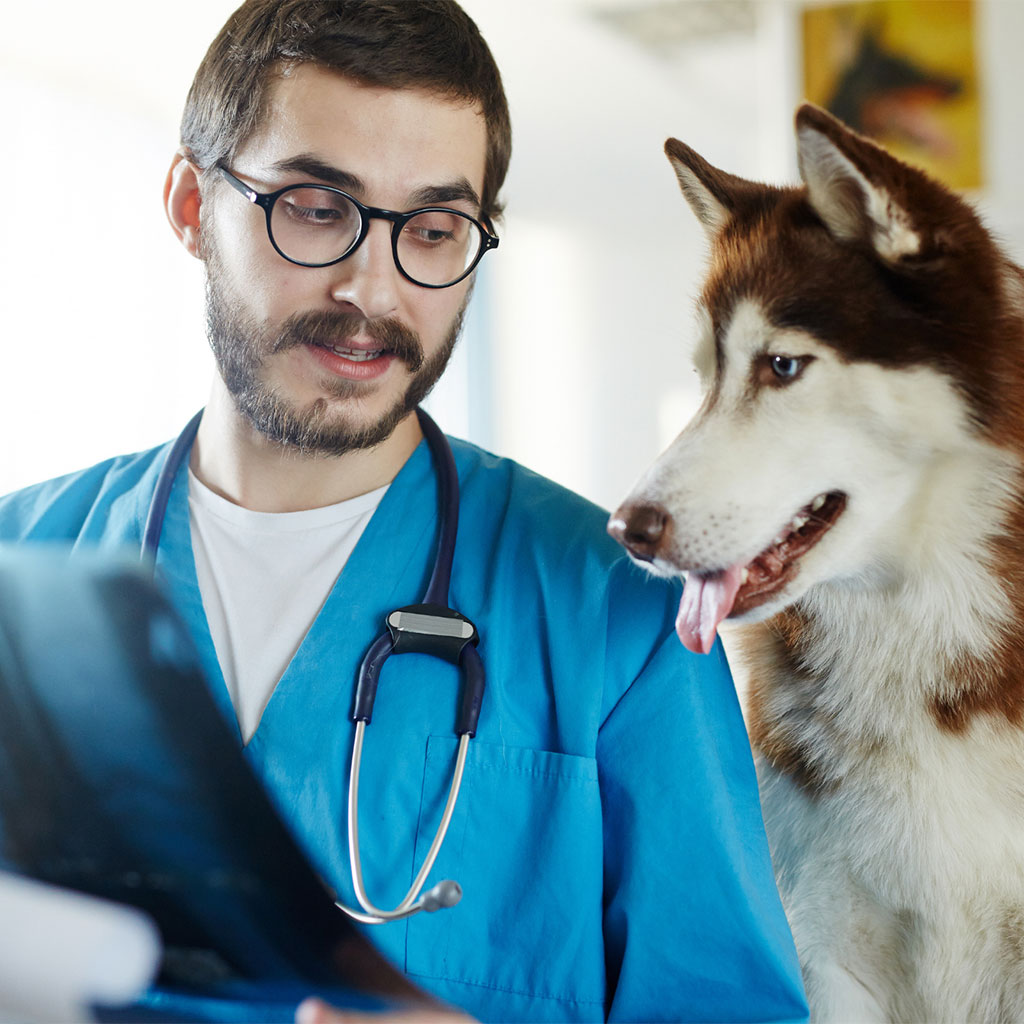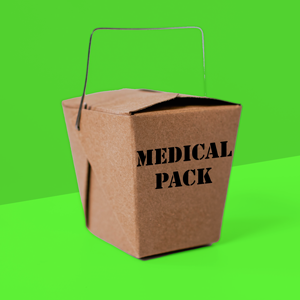Clinical Intelligence: Essential Radiography
$495.00
“Enable Group Purchase” and buy access for 5 or more participants for just $465.00 each! Discount automatically applied at cart.
Description
Clinical Intelligence: Essential Radiography course builds broad understanding of assisting with radiography procedures.
The Essential Radiography course gives a comprehensive understanding of the preparation for and the process & techniques of everyday procedures using over 400 minutes of interactive lessons.
Tip:
Buying this for another person or more than one person? If so, check the ‘Enable Group Purchase’ box and buy enough seats for everyone doing the course.
Help with buying for others.
The course program covers:
- Implement Radiography Health and Safety
- Radiography is an essential diagnostic tool in veterinary practice and it is vital for the veterinary nurse to not only have a thorough understanding of radiographic techniques and the use and maintenance of radiographic equipment, but to ensure that every measure is taken to protect both themselves and fellow members of staff from the radiation produced during radiographic procedures.
This presentation will focus on health and safety techniques that can be implemented in all clinics to achieve optimal radiography workplace health and safety.
- Radiography is an essential diagnostic tool in veterinary practice and it is vital for the veterinary nurse to not only have a thorough understanding of radiographic techniques and the use and maintenance of radiographic equipment, but to ensure that every measure is taken to protect both themselves and fellow members of staff from the radiation produced during radiographic procedures.
- Understand Anatomical Directional Terminology (Radiography)
- Craniocaudal, ventrodorsal, lateromedial, dorsoplanter – what do they all mean and why are these terms used? This presentation will identify and discuss the anatomical terminology used for radiographic views, with examples for each term and how it relates to the x-ray beam.
- Identify and Understand the Parts of the X-ray Machine
- We all know the x-ray machine takes x-rays – but which part of the machine does what? All persons involved in radiography should have a basic understanding of the machine, not only to improve radiographic procedures but to assist in maintaining optimal health and safety standards. This presentation will discuss each part of the machine and its function, including; the tube head, collimator, control panel and table.
- Understand Exposure Factors (Radiography)
- Many factors need to be considered to ensure a good quality image is produced when performing radiography. These factors all contribute to the exposures selected – Kilovolts, Milliamperage, Time and Field Focus Distance. Therefore, it is vital that we have a thorough understanding of what each exposure controls and how it will affect the final image. This presentation will discuss each of the afore mentioned exposure controls, in detail, to achieve understanding.
- Use Collimation
- What is collimation and why is it important to use? This presentation will answer these questions and much more. Examples of collimation and their borders, using correct directional terminology, are also included.
- Prepare for Radiography
- What do we need to prepare to perform radiography and why is it important? Radiography is a commonly used diagnostic tool and the image produced needs to be the best that can be achieved to enable correct interpretation, diagnosis and treatment. This presentation focuses on some basic and quite simple but very important preparation tips to ensure the first x-ray is the only one required – limiting exposure to personnel and stress to the patient.
- X-ray and Image Production
- The process of radiography may vary – from using film and manual developing to digital imaging – but the basic formation of an image remains the same – the production of x-ray radiation and the interaction between these x-rays and the area of the patient being x-rayed. This presentation will discuss the 3 main elements of x-ray image production. The production of the x-ray radiation by the x-rays machine; factors that affect the interaction of the x-rays with the patient and how the image is formed and recorded – using x-ray film and digital radiography.
- Contrast Radiography
- What is contrast radiography and why do we use it? This presentation answers those questions and much more. Including the types of contrast mediums used, how they are used and detailing examples of specific contrast radiography procedures.
- Use Positioning Aids
- Why is it so important to use positioning aids in radiography? – It takes longer, more effort – why not just hold the patient? Health and safety is the reason why! We all know that if we are exposed to x-ray radiation, it can have some pretty devastating effects on us. This presentation covers the different types of positioning aids available and examples of how they can be used.
- Understand & Use Grids
- What are grids, why are they used and how are they used? This presentation will answer these questions and explain a lot more. Discussing the different types of grids (Parallel, Focused, Pseudo-focused and Crossed), why they are used and how to use both stationary and moving grids in radiographic routines.
- Digital Radiography
- Digital radiography is becoming more widely used in the veterinary field; therefore it is important that the veterinary nurse has an understanding of the system and how it works. This presentation provides an overview of what digital radiography is, how it works and the many advantages of this system. Discussing both Computed Radiography and Direct Digital Radiography.
- Positioning for radiography
- Lateral Views of the Trunk (Thorax & Abdomen)
- This presentation details how to position a patient for a lateral radiographic view of the thorax and the abdomen (separately), including use of positioning aids, centre point and collimation borders.
- Ventrodorsal Views of the Trunk (Thorax & Abdomen)
- This presentation details how to position a patient for a ventrodorsal radiographic view of the thorax and the abdomen (separately), including use of positioning aids, centre point and collimation borders.
- Dorsoventral Views of the Trunk (Thorax & Abdomen)
- This presentation details how to position a patient for a dorsoventral radiographic view of the thorax and the abdomen (separately), including use of positioning aids, centre point and collimation borders.
- Ventrodorsal View of the Pelvis (Extended Legs)
- This presentation details how to position a patient for a ventrodorsal radiographic view of the pelvis (extended legs), including use of positioning aids, centre point and collimation borders.
- Lateral View of the Pelvis
- This presentation details how to position a patient for a right lateral radiographic view of the pelvis, including use of positioning aids, centre point and collimation borders.
- Lateral View of the Shoulder
- This presentation details how to position a patient for a right lateral radiographic view of the shoulder, including use of positioning aids, centre point and collimation borders.
- Caudocranial View of the Shoulder
- This presentation details how to position a patient for a Caudocranial radiographic view of the shoulder, including use of positioning aids, centre point and collimation borders.
- Lateral View of the Elbow (Flexed)
- This presentation details how to position a patient for a Flexed Lateral radiographic view of the elbow, including use of positioning aids, centre point and collimation borders.
- Mediolateral View of the Stifle
- This presentation details how to position a patient for a Mediolateral radiographic view of the stifle, including use of positioning aids, centre point and collimation borders.
- Caudocranial View of the Stifle
- This presentation details how to position a patient for a Caudocranial radiographic view of the stifle, including use of positioning aids, centre point and collimation borders.
- Lateral View of the Skull
- This presentation details how to position a patient for a right lateral radiographic view of the skull, including use of positioning aids, centre point and collimation borders.
- Ventrodorsal View of the Skull
- This presentation details how to position a patient for a ventrodorsal radiographic view of the skull, including use of positioning aids, centre point and collimation borders.
- Lateral Views of the Trunk (Thorax & Abdomen)
Inclusions:
- Interactive video lessons
- Downloadable Tip Sheets
- Quizzes & self assessments
- Certificate of Completion
Duration
- Nominal course duration: 7 hours
- Enrollment duration: 12 months
Looking for a whole suite of veterinary nurse knowledge? Consider getting a ProSkills Short Courses Subscription. Available for Individuals or the whole Team.
cpd Points
AVNAT CPD
AVA Vet Ed
SKU
PSINTCIER
Categories Intelligence Programs, Online Courses
Tags Advanced VN, Communication, Consultation, Medical, Medicine, Nurse



